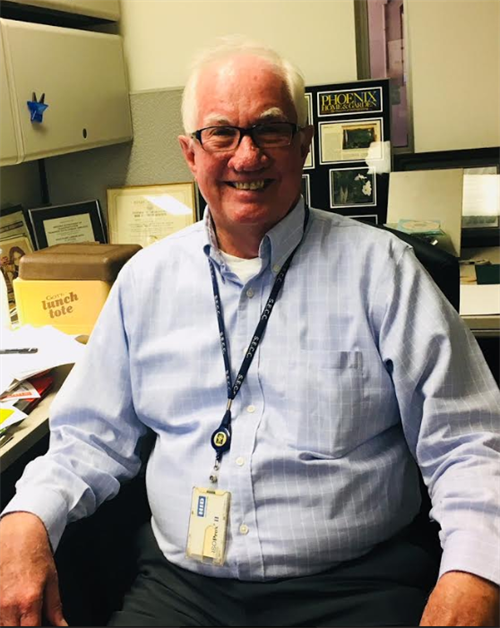Sowing the seeds of beautiful highways
Sowing the seeds of beautiful highways

When the season's right, you can’t drive on Arizona’s highways for long without noticing brilliant splashes of yellow, red and purple competing for appreciation along various roadside banks and in the medians.
Depending on the season and the highway, drivers can see a profusion of penstemon, prickly poppy, purple owl’s clover and hundreds of other wildflowers in hues of green and orange along native trees bedecked in yellow and white blossoms.
This native splendor is no accident. It’s the result of decades of trial and error, scientific know-how, and the care and leadership of LeRoy Brady, chief landscape architect for the Arizona Department of Transportation.
Brady, 79, has been with ADOT for as long as there has been an ADOT: 46 years.
“I have always loved plants of all types,” Brady said. “My earliest memories are of working with plants, picking berries, collecting plants, transplanting, planting seeds.”
Starting at age 8, he worked not only in his family garden but also aiding neighbors in Durango, Colorado, with landscaping and gardening. Brady graduated from Utah State University with a degree in landscape architecture and environmental planning.
He starting making highways beautiful in Idaho before being lured away by ADOT in 1974. With a family in tow, Brady came as much for the proximity to his parents as for the challenge of populating Arizona’s highway banks with native vegetation requiring minimal water.
From tumble weeds to native plants
“We had tumble weeds, weeds and invasive species everywhere,” Brady said of highway landscaping at the time. Some banks were made of concrete, others planted with unsustainable grass and still others covered in weeds.
Brady’s unit began transitioning away from these plants in 1980 and by 1993 had gone with an entirely native selection, he said. Brady and colleagues plant an estimated 2,000 acres in any given year.
“We use native grasses, coneflower, yarrow, penstemon, desert marigold, brittle bush and desert lupine,” to name just a handful. “The effort is to make it all sustainable.”
ADOT’s highway areas are broken into environmental zones, and for each zone, a list of seeds has been developed.
“The seed mixture at Sunset Point is entirely different than in Quartzsite,” Brady said.
Each project utilizes seeds from 20 to 25 species, which include an array of annuals, biennials and perennials as well as cool-season and warm-season germinators.
Tilling, fertilizer and the proper nutrients are among 18 elements required for these roadside plants to grow.
A volunteer with a big heart
Brady hasn’t just beautified highways. He has also volunteered his time to improve the environment across Arizona by serving on the boards of a large number of organizations.
These include the Design Review Board, Parks Board for the City of Mesa, the Arizona Native Plant Society, the Arizona Chapter of the American Society of Landscape Architects, the Arizona Historical Advisory Commission, Boyce Thompson Arboretum, the Southwest Vegetation Management Association Board and Arizona Board of Technical Registration.
Brady has no plans to trade in his gardening tools just yet. It's not so much a point of pride but the delightful opportunity to sew the seeds of what he loves.
